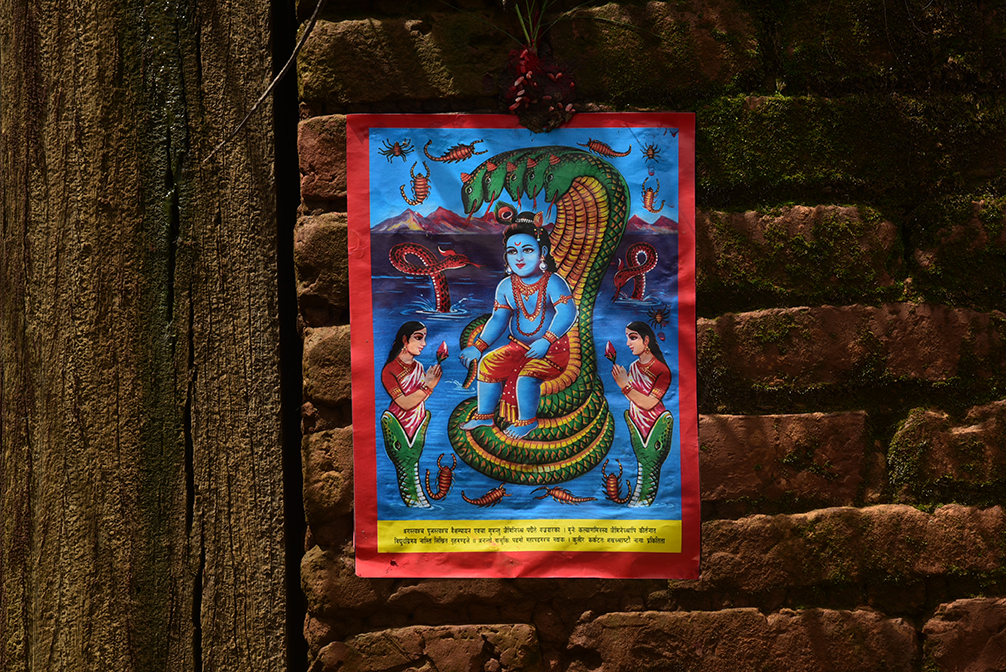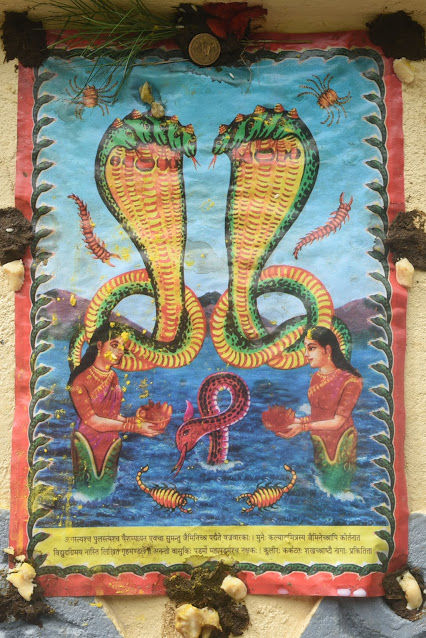Naga Panchami is a day of traditional worship of Snakes also called Nag in respectfully observed by Hindus throughout India, Nepal, and other countries where Hindu. The worship is offered on the fifth day of bright half of lunar month of Shrawan, according to the Hindu and Lunar calendar.
 |
| Nag poster |
Nepali people worship snakes as gods, also called the Nagas in Nag Panchami. In ancient times Nagas halted rain from pouring over Nepal. The king of that time was also a Tantric and so he used his power to make Nagas let go of rain. The king succeeded in doing so but he also honored the majestic power of Nagas by turning the day of victory into a festive occasion of Nag Panchami. On Nag Panchami, devotees put a picture of Naga high above their doorway and perform puja with necessary puja items. Offerings in the form of food are left in the yards and paddies for snakes. Naga temples in the valley at Nagpokhari, Taudaha, and Nagdaha are thronged with devotees on this day.
This day, which falls on the Panchami of Shravan Shuklapaksh, is dedicated to the serpent deity. There are 12 snakes in the Vedic philosophy. Ananta, Vasuki, Shesh, Padyam, Kambala, Karkotaka, Ashvatara, Dhritarashtra, Shankapala, Kalia, Takshaka and Pingala are all worshiped today.
These snakes, with their printed pictures and strings, are carried by the Brahmin priests to the door of their Jajman's house with cow dung, Dubo, and Dora. It is believed that a picture of a snake pasted on a door or the main pole protects it throughout the year.
 |
| Worshiped Nag |
Thank you for reading these articles. Don't forget if you have comments and suggestions about Nag Panchami.

0 Comments
Please Don't comment slang word and don't leave any spam link. Thank you.